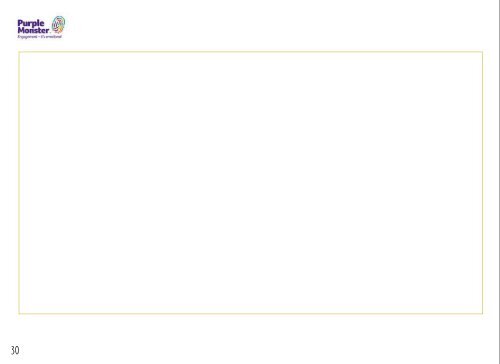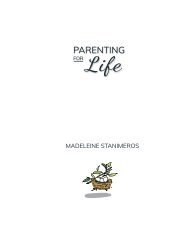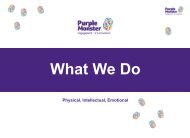PurpleMonster_ebook_V2
Create successful ePaper yourself
Turn your PDF publications into a flip-book with our unique Google optimized e-Paper software.
INTELLECTUAL<br />
Content and Engagement<br />
So, you’ve got your venue. You’ve got your speakers.<br />
You’ve got your theme. What are you actually going<br />
to be saying at your event?<br />
First things first, don’t bombard people with<br />
information. You might want to cover everything you<br />
can think of, but instead focus on what you need<br />
to say. If you’ve got them sorted, make use of the<br />
objectives and theme of your meeting/event to shape<br />
the content, whittling it down to only the items and<br />
messaging you need to cover. Don’t cram content in<br />
for the sake of it.<br />
We like to use the “Context, Experience, Reflection”<br />
structure when we’re designing an event. It’s a great<br />
frame for any session and works like this…<br />
Things to remember:<br />
• Don’t bombard people with information. Tell them<br />
what they need to know, not everything you want<br />
to say.<br />
• Make sure the content is delivered in an engaging<br />
way- nobody wants to sit through hours of<br />
PowerPoint slides…<br />
• Engagement is key. Consider the best, most<br />
engaging ways of content delivery, and use<br />
discussion and participative exercises wherever<br />
possible!<br />
CONTEXT: whatever<br />
is to be conveyed<br />
is established<br />
by setting up the<br />
context and why it is<br />
important.<br />
EXPERIENCE: the<br />
context is then brought<br />
to life by an exercise<br />
that provides a parallel<br />
experience.<br />
REFLECTION: these two<br />
factors are then combined in a<br />
period of reflection where the<br />
delegates themselves reach<br />
conclusions and decide on the<br />
actions that should be taken.<br />
30 31






